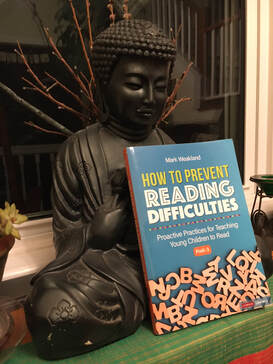 In Norman Fischer’s world of Zen, an “entire culture of practice” includes the performance of rituals, the building of relationships, and the actions of study. In the world of elementary school classrooms, I believe the same elements can be and should be present. Previously we discussed the classroom actions that produce specific reading and writing skills and categorized them into three broad categories: teaching techniques, classroom activities, and student-used strategies. When viewed in terms of “culture,” we see these techniques, activities, and strategies as a way of life, used weekly, daily, and hourly, year after year. But what of rituals and relationships? Rituals For me, ritual encompasses tradition, rite, habit, and ceremony. Regularity is paired with beauty and mystery, helping to keep daily efforts from sliding into dull and dreary routines. In classrooms, incense and candles would boost engagement but I bet they’d also collide with allergic reactions, classroom fires, and parent protests. Not a good mix. So, what else could classroom rituals be? The ritual of sustained writing in special spaces, which could include:
In gentle numbers time so idly spent; Sing to the ear that doth thy lays esteem, And gives thy pen both skill and argument. The ritual of sustained reading and reflection:
Relationships
Within communities, from temple to church to classroom and school, we find relationships - the last element of our “entire culture of practice.” To get you started, I offer these “building relationships” ideas. I know you’ll think of others! Relationships between teachers and students, including:
Relationships between students (harnessing the social nature of children in service of education):
Grandiose actions can foster relationships. Here I am thinking of things like taking trips to the library and reading in a continuing-care community. But smaller actions can connect children to larger communities, too. For example, if you stock your classroom with plenty of books that feature characters who look like the diverse readers in your classroom, you’ll be connecting your students to Black communities, rural communities, Native American communities, suburban communities, Asian communities (Hmong, Vietnamese, Indonesian), and so forth. These books come from a recent issue of NEA Today:
Conclusion Over the course of two blogs, we’ve investigated literacy elements – from teaching techniques and classroom activities to rituals and relationships– that together, over months and years, form a “culture of practice.” What is this culture of practice leading to? What is its purpose? In Norman Fischer’s world of Zen, a culture of practice ultimately leads to a shift in the practitioner's understanding of his life, a greater ability to love. and personal transformation. In a first or fifth grade classroom, the shift can be equally profound. Through the unceasing actions of dedicated, professional teachers, students grow to see themselves as human beings with agency and a strong sense of themselves as readers, writers, thinkers, and learners. |
Mark WeaklandI am a teacher, literacy consultant, author, musician, nature lover, and life long learner.
|

 RSS Feed
RSS Feed